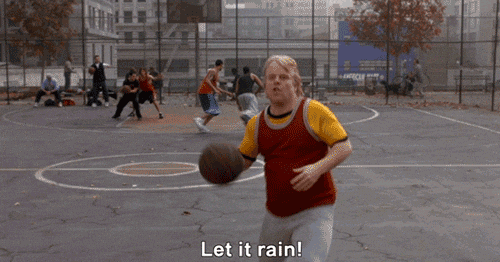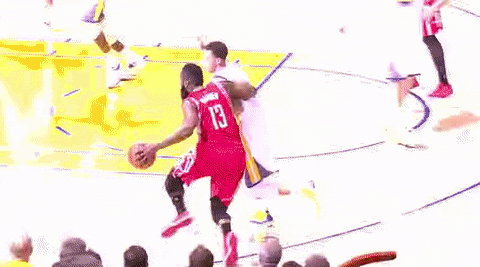Why Basketball Players Need Strength Training
Basketball is a sport where a lot of coaches and a lot of athletes will say athletes should not be doing strength training because it will screw up the jump shot, hinder the performance on the court, and is really not imperative to becoming a better basketball player.

Why do people still have this thought process??!!!??
Case in point, look at the Chicago Bulls in the ‘90s who dominated the decade, winning six NBA titles. This team of professional athletes performed the Olympic lifts and trained using highly explosive movements that required a lot of technique. We know because we have spent time with Al Vermeil and Mike Gattone, with who we are fortunate enough to continue to spend time with. These two strength coaches worked with the Chicago Bulls.

The strength coaches talk about how the athletes were extremely explosive. The coaches programmed technical movements and variations in positions that helped the athletes be more reactive and dominant on the court. For instance, Mike Gattone shared a story with us about B.J. Armstrong power cleaning 300 lbs and routinely hit 110k two-block power cleans. This is one example but all the athletes have similar stories. Horace Grant, at 6’10”, was known for power cleaning 315#. Pulling that weight that high requires a lot of power.
We need to recognize that a key component of basketball is being able to produce a lot of force very rapidly and consistently throughout the game will not only help an athlete dominate in the sport but will allow for more longevity through having a decent amount of muscle to stay healthier longer, protect joints, and prevent injuries from happening.
This is a very important point with basketball. With athletes who are so tall and so long, we need to make sure their joints are more stable. We have to remember that when dealing with basketball players, they are some of the most explosive athletes on the planet; however, because of how tall and long they are, they sometimes struggle with high rates of coordination. It is important to develop the aspect of high rates of coordination inside the weight room.
4. Mobility
We know this isn’t flashy and some may say a little hokie. But when we are talking about taller athletes. It is very important to recognize that taller athletes may have very tight ankles and hips and may have a lower back that is not as mobile.
By focusing on mobility as part of their strength training, we can see as the mobility improves we can get more aggressive with their strength work. When we can get more aggressive with their strength work, they will gain more muscle. This will allow the athletes on the court to be more explosive, bang a little more inside the paint, and generally help with their success on the court.
It is also no hidden secret that basketball players have to have really mobile ankles and hips. When crossing up a defender, basketball players have to have their ankles significantly dorsiflexing and plantarflex. Having mobility through the ankles, hips, and lower back will lead to better positions on the court to taking advantage of opponents.
Focus on mobility, in the beginning, to help the strength training become more aggressive and lead to better positions on the court.
3. Explosiveness / Unilateral & Bilateral
We have to train basketball players to be explosive in unilateral and bilateral positions. When developing a basketball player to be explosive in a bilateral position or unilateral position we have to work on specific strength movements. If we increase the athlete’s strength we will increase their rate of coordination.
For example, if we have the athlete doing a single leg squat with dumbbells in their hands, or even a barbell on their back, we will help them become stronger in the unilateral position. Let’s say we have a hypothetical athlete doing single-leg squats with a barbell on the back for five sets of five reps on each leg. We can have them rest for two to three minutes and then have the athlete go hit a unilateral jump like jump lunges or jump step-ups. This will help increase explosiveness.
If we are looking at it from a bilateral position, we might have athletes do goblet squats or front squats. A lot of basketball players struggle to achieve a full range of motion depth because of how tall they are. Because of this, we can have them do the front squat to a box unto the mobility in their ankles and hips allow them to get deeper. After the strength work, rest for two to three minutes and then go and do stair jumps.

The idea behind these two suggestions is to focus on unilateral and bilateral strength being contrasted with explosive jumps. One thing we have seen with our athletes at Garage Strength is that as our basketball players become more coordinated and grow, one unique thing we do is have them perform a unilateral lift, like a single leg squat, and then super-set the movement with a bilateral jump. This is an A-ha! moment for athletes. They learn how to coordinate everything really well. They are triggering the strength component from a unilateral perspective and then doing the explosive work with a bilateral movement.
Basketball is a sport that requires athletes to be able to jump off of one foot and off of two feet. The jumping ability needs to be developed both unilaterally and bilaterally. Bias the training towards an athlete’s weakness.
2. Dynamic Trunk Control
Developing DTC is very important. Almost every sport requires an athlete to control their trunk at very high speeds. The ability to move the hips and shoulders while still controlling their trunk is a testament to how agile the athlete is. Athletes who can move quickly forward without losing their trunk, coupled with their mobility and explosiveness in unilateral and bilateral positions, basketball players are able to make cuts and get their defender off-balance. Setting up an opponent to put them in a precarious position allows the player to take advantage of an easier shot, better path to the bucket, or open up a passing lane.
1. Reactiveness
Reactiveness is the ability to see what is happening and respond to the signal. It is the ability to see a defender at a disadvantage and responding to the opening. It is the ability to track the ball for a rebound, ground and react to get back up, and seeing the teammate open down the court. Reactiveness is all about responding to the game. It is based more on the opponent.
Oftentimes, reactiveness transpires while in a unilateral position almost all of the time that requires an athlete to respond within a small window as quickly as possible to take advantage of what an opponent might have done. We need to teach athletes how to react through unilateral jump series that lead to bilateral jumps back into unilateral jumps so the body learns to respond to react quickly. In addition, utilizing unilateral reflexive work in the weight room so that it leads to more power output when in a unilateral position to develop proper reactiveness on the court.
Recap
We need to develop tall athletes’ mobility first. We need to treat and increase their explosiveness in unilateral and bilateral positions. We then get athletes’ to have more awareness of their gut to enhance their dynamic trunk control to see how their ab work transfers over to the court. Next thing we know, almost like a video game, basketball athletes become extremely reactive, controlling the opponent, knowing specifically what to do to set the defender up for an advantageous position to be gained. Put these four factors together and athletes will dominate on the court.
Buckets!!!
DANE MILLER
Dane Miller is the owner and founder of Garage Strength Sports Performance. He works with a select handful of clients on building comprehensive programs for fitness and nutrition. Several times a year he leads a workshop for coaches, trainers, and fitness enthusiasts.

